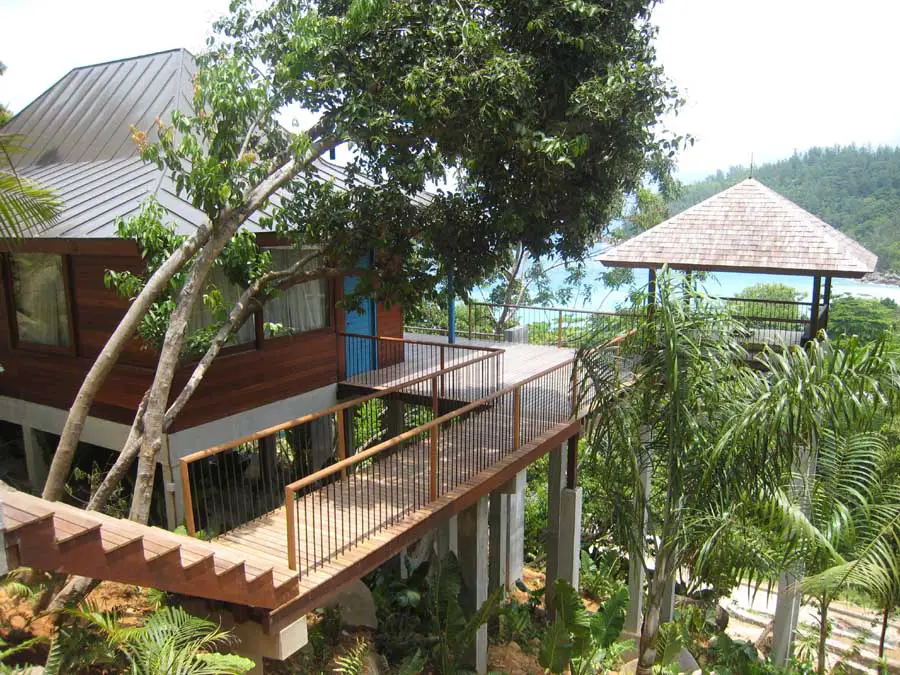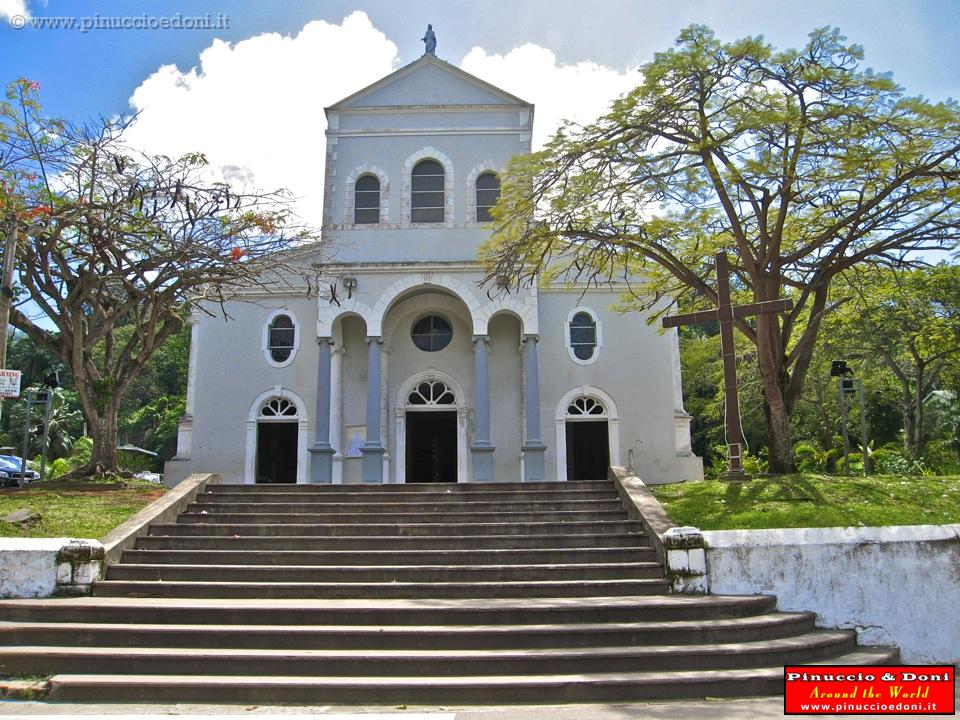Traditional Architecture
Due to the fact that the Seychelles Islands was not occupied until the 1700’s, the architecture finds its roots in the era of colonization. Whilst traditional, the archaic mansions and bungalows built in the colonial times certainly reflect the luxurious living of the wealthy plantation and land owners.
Plantation estates were built around cinnamon, coconut, and vanilla industries. The traditional plantation estate focused on a courtyard with an owner's or manager's house, (the kitchen was usually separate from the house) the kalorife (drying oven for copra), and storage houses. Typical town houses had a general Victorian form, but with its roofs and walls made of corrugated iron sheets.
As agriculture declined, many homes were later constructed in an architecture common to many former British colonies, such that there is often a flat roof with a slight slope and windows with many horizontally arranged panes that can be tilted in order to allow easy circulation of air. In general the houses the in Seychelles are all designed in a neat manner with steep terraces and large verandas. The verandas were purposely made that way in order for inhabitants to enjoy the wonderful Seychelles climate. In addition, wooden houses or houses built out of logs are frequently seen in the coastal linings of Seychelles. The living rooms are exquisitely decorated and usually the furniture is all made out of wood that has intricate carvings on them.
Some of these lovely examples of traditional homes are now being replaced through progress or advancement and although they are fewer in numbers, many, with their intricate roof structures are still standing today.
Modern Achitecture
Modern architecture has attempted to assimilate traditional styles with practical features designed to capture the cool island breezes. The exclusive island resort, The Banyan Tree, is a perfect example of this modern style of architecture. Their villas combine contemporary, colonial and plantation decor which defines modern Seychelles architecture, with its high sloping ceilings, airy verandas, and louvered doors.
Modern architecture has attempted to assimilate traditional styles with practical features designed to capture the cool island breezes. The exclusive island resort, The Banyan Tree, is a perfect example of this modern style of architecture. Their villas combine contemporary, colonial and plantation decor which defines modern Seychelles architecture, with its high sloping ceilings, airy verandas, and louvered doors.
Buildings of Interest
Kenwyn House, Mahe
Kenwyn House was built circa 1855. The first person to live in the house was the chief medical officer at the time- a Dr. James Henry Brooks. Dr. Brooks was the chief medical surgeon as well as the German consulate to the Seychelles from 1858 - 1879 (He died in 1920 at age 89yrs).
In 1878 Cable & Wireless (Formerly the 'Eastern Telegraphic Company') purchased the Kenwyn House from Dr. Brooks. The chief engineers for Cable & Wireless resided at Kenwyn House whilst they were here setting up global communications for the Seychelles. There is a general consensus that C&W were the ones to give the house the name "Kenwyn House" - named after a village in Cornwall. (Cornwall incidentally was the area where the underwater telegraph cables to the Seychelles came from). Towards the end of the 20th century C&W used Kenwyn House as a residence for their general managers.
In 1984, as per the National Monuments Act (Chapter 140), Kenwyn House was declared a National Monument of the Seychelles. Flawless Ltd. now occupies the Kenwyn House, using it as a showcase for their precious gems and unique diamond jewellery designs.
Kenwyn House also dedicated one entire floor to a local art gallery, the largest on Mahe in fact. It is one of the most well-photographed buildings in Victoria and is 'our Jewel of the Seychelles'.
The Cathedral of Immaculate Conception
This imposing Cathedral is the Mother Church of the Catholic Diocese in Seychelles. Constructed on the site where Father Leon of Avanchers built the first vault in March 1851 that was devoted to the Virgin of the immaculate conception, the Cathedral is one of the first churches in Seychelles.
The first and only Seychellois Bishop, Felix Paul, who passed away on the 21st November 2001, is buried inside the cathedral in a tomb built in the flooring. The tomb is not visible but its location is marked by a special plaque.
The Cathedral has undergone numerous renovations over the years. In 1993-94 it was completely renovated, except for the external walls. The last renovation was completed In 1995 when Seychellois sculptor, Egbert Marday fashioned the tabernacle and the carved doors.
The Cathedral of the Immaculate Conception and Capucine House (the residence of the Roman Catholic Bishop) are two of the most impressive vestiges of the French Colonial era still standing and should definitely not be missed.
This imposing Cathedral is the Mother Church of the Catholic Diocese in Seychelles. Constructed on the site where Father Leon of Avanchers built the first vault in March 1851 that was devoted to the Virgin of the immaculate conception, the Cathedral is one of the first churches in Seychelles.
The first and only Seychellois Bishop, Felix Paul, who passed away on the 21st November 2001, is buried inside the cathedral in a tomb built in the flooring. The tomb is not visible but its location is marked by a special plaque.
The Cathedral has undergone numerous renovations over the years. In 1993-94 it was completely renovated, except for the external walls. The last renovation was completed In 1995 when Seychellois sculptor, Egbert Marday fashioned the tabernacle and the carved doors.
The Cathedral of the Immaculate Conception and Capucine House (the residence of the Roman Catholic Bishop) are two of the most impressive vestiges of the French Colonial era still standing and should definitely not be missed.
Whether you are wanting to escape the approaching winter in the Northern Hemisphere or you are starting to feel the summer vibes in the Southern Hemisphere, contact us to book your dream Seychelles holiday! www.seychellesyachtcharter.com









No comments:
Post a Comment